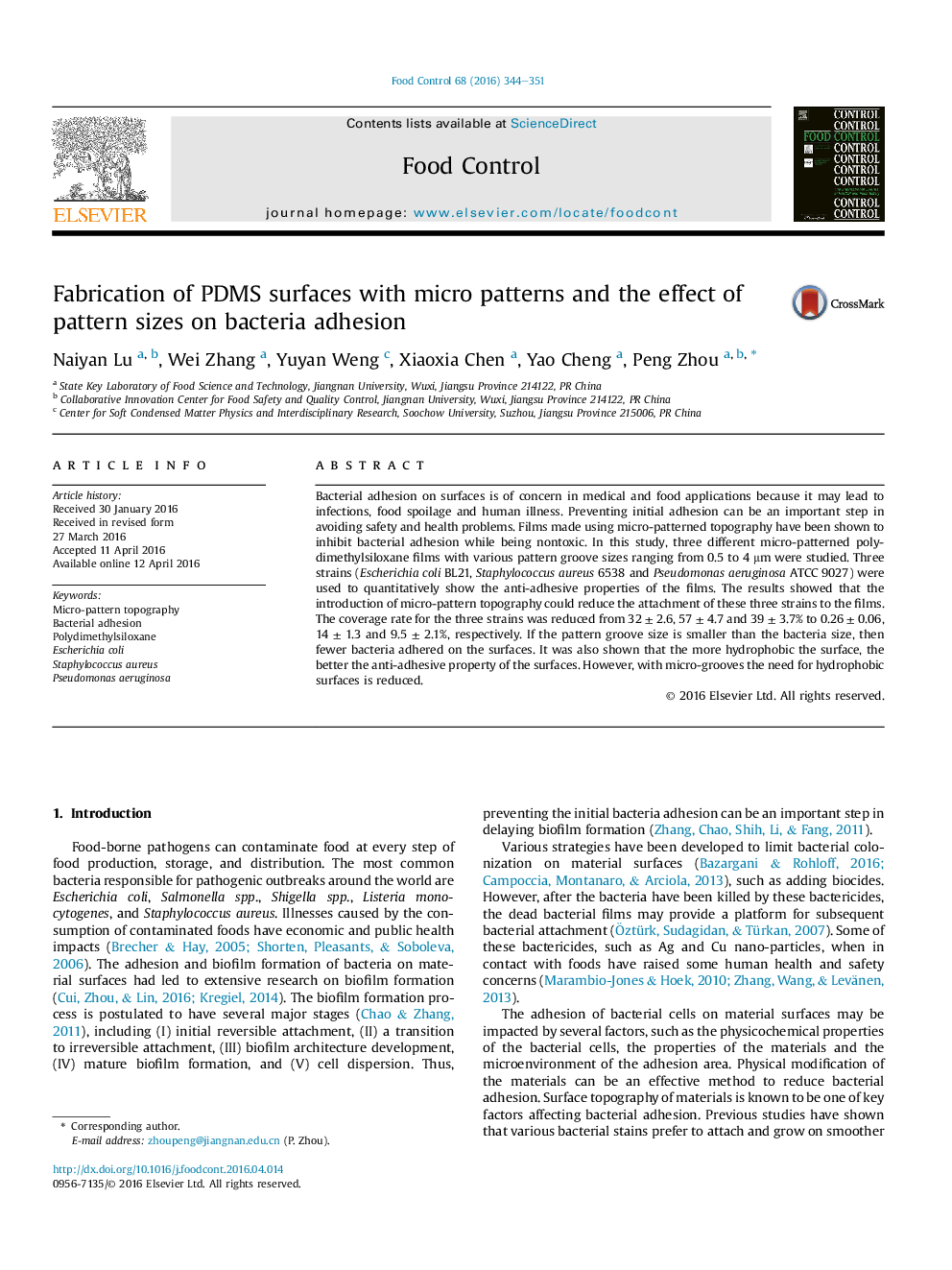| Article ID | Journal | Published Year | Pages | File Type |
|---|---|---|---|---|
| 4559060 | Food Control | 2016 | 8 Pages |
•Micro-patterned surfaces could reduce bacterial adhesion.•Size differences between patterns and bacteria were crucial to bacterial adhesion.•Hydrophobicity could also influence the anti-adhesive property of the surfaces.•Micro-patterned topography played more important role than surface hydrophobicity.
Bacterial adhesion on surfaces is of concern in medical and food applications because it may lead to infections, food spoilage and human illness. Preventing initial adhesion can be an important step in avoiding safety and health problems. Films made using micro-patterned topography have been shown to inhibit bacterial adhesion while being nontoxic. In this study, three different micro-patterned polydimethylsiloxane films with various pattern groove sizes ranging from 0.5 to 4 μm were studied. Three strains (Escherichia coli BL21, Staphylococcus aureus 6538 and Pseudomonas aeruginosa ATCC 9027) were used to quantitatively show the anti-adhesive properties of the films. The results showed that the introduction of micro-pattern topography could reduce the attachment of these three strains to the films. The coverage rate for the three strains was reduced from 32 ± 2.6, 57 ± 4.7 and 39 ± 3.7% to 0.26 ± 0.06, 14 ± 1.3 and 9.5 ± 2.1%, respectively. If the pattern groove size is smaller than the bacteria size, then fewer bacteria adhered on the surfaces. It was also shown that the more hydrophobic the surface, the better the anti-adhesive property of the surfaces. However, with micro-grooves the need for hydrophobic surfaces is reduced.
